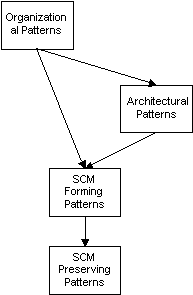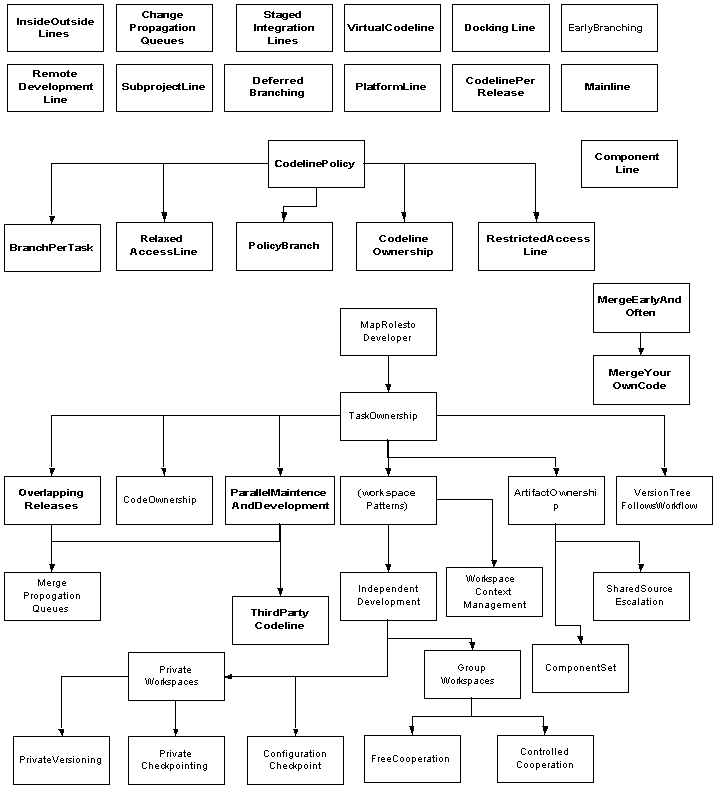Copyright © 1998 by Brad Appleton, Stephen Berczuk,
Ralph Cabrera, and Robert Orenstein.
Permission is granted to copy for the PLoP '98 conference.
The approach an organization takes to Software Configuration Management
(SCM) can significantly affect the quality and timeliness with which a
software product is developed.
By SCM, we essentially mean the process of identifying, organizing,
controlling, and tracking both the decomposition and recomposition of:
software system structure, functionality, evolution, and teamwork.
In short, SCM is the "glue" between software artifacts, features, changes,
and team members; it forms the ties that bind them all together from
concept to delivery and beyond.
This paper presents some of the patterns from a pattern language for
SCM which we began developing at
ChiliPLoP'98.
There are many approaches to SCM, and the structures, policies, and
processes work best when applied in the appropriate context. This
context is determined by organizational and architectural decisions, as
well as previously existing SCM policies. Our goal is to place SCM
structures in the context of these other existing structures, making it
easier to decide how to structure an SCM process which will be
effective for your context.
These SCM structures may be described as "patterns": named nuggets
of insight conveying battle-proven solutions to recurring problems, each
of which balances a set of competing concerns
(see [Appleton97]).
SCM Patterns fit into a framework of Organizational Patterns
which can be grouped as follows:
- Organizational Patterns:
-
Patterns which define how the organization is structured. This
includes patterns which describe the size of the team, management
style, etc. (see [Beedle97]
and [OrgPats]).
- Architectural Patterns:
-
Patterns which define how the software is structured at a high level.
Some examples of these sorts of patterns have been published in prior
PLoP Proceedings
([Berczuk95]
and [Berczuk96])
and in books such as [POSA].
- Process Defining (forming) Patterns:
-
These SCM Patterns describe structures, such as the project directory
hierarchy, which are set up near the beginning of a project.
- Maintaining (preserving) Patterns:
-
These are SCM patterns which affect the day to day workings of the
organization.
These categories of patterns are shown in the figure at right.
|

|
The line between the Forming and Maintaining patterns may be blurry,
but we feel the distinction is conceptually important to understand the
architecture of the development process pattern language. Because of the
strong relationship between the patterns in each category (for example,
how you set up the directory tree affects the process you follow for
checking files in and out) we shouldn't spend too much time looking at
where a pattern fits, but rather focus on which patterns it follows from.
The patterns we are documenting should be applied with an understanding
of the context in which the problem exists. The figure below shows the
patterns we are working on, with their relationships in the language
in bold face. Some of the other kinds of patterns have been published
previously ([Berczuk97]).
Others are in "patlet" form now.
Relationships Between SCM Patterns

[back to the table of contents]
Send us your comments!

